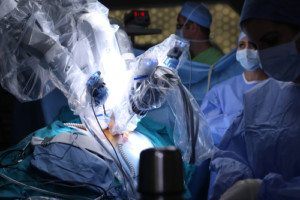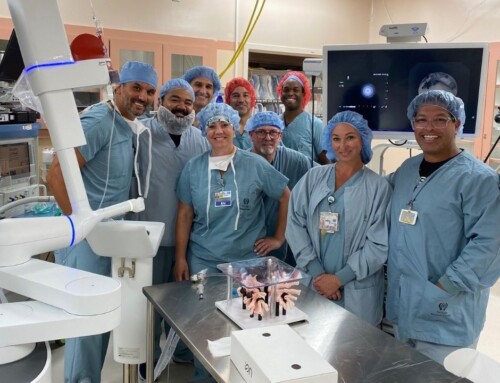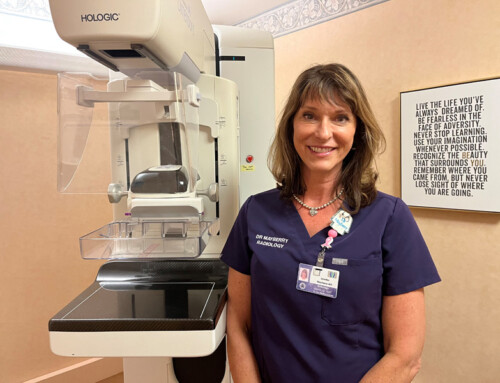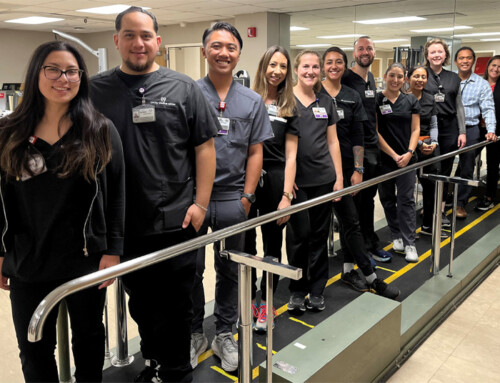 Robotic surgery may sound like something out of a science-fiction movie, but it’s quite real! Robots have been helping humans perform surgery for about three decades now.
Robotic surgery may sound like something out of a science-fiction movie, but it’s quite real! Robots have been helping humans perform surgery for about three decades now.
Surgeons use carefully designed robotic assistants as fantastic high-tech solutions for making procedures simpler, more accurate, and less distressing for patients. Millions of operations across the world are performed using da Vinci robots — which hold surgical instruments and visual aids with their many mechanical arms.
These machines are specifically designed to reach areas the average surgeon can’t access without making large incisions or leaving prevalent scars. For patients, robotic surgery advancements mean:
- Smaller incisions and scars
- Reduced risk of infection
- Less need for blood transfusions
- Faster recovery times, and reduced post-care discomfort
- Shorter hospital stays
Robot-assisted procedures are growing even more popular as technology advances — and that means more precise and efficient procedures, with less and less patient discomfort. Read on to learn about some of the most impressive recent advancements in robotic surgery.
1. Mazor Robotics’ Renaissance Guidance System
The Renaissance guidance system by Mazor Robotics is a comprehensive surgical solution for spinal procedures. Because the spine is one of the most intricate parts of the body, surgeons can’t afford to take risks when working on patients with spinal issues. Renaissance offers a direct blueprint for the surgical process, tailored to each individual patient. This guidance system increases accuracy, lowers complication rates, and results in faster recovery times.
Some of the leading hospitals in the world use Renaissance technology regularly, to assist with things like:
- Spinal fusion: The Renaissance system is often used to treat broken vertebrae, spinal weaknesses, and deformities. This system guides the tools of the surgeon for absolute accuracy during implantation procedures.
- Kyphoplasty: The accuracy of the system helps treat compression fractures in the spine. Renaissance can pinpoint the precise location for the injection of bone cement.
- Biopsies: For tissue-related diagnoses, Renaissance can guide the surgeon’s hand with minimal x-rays, minimizing soft tissue damage to the patient.
- Scoliosis surgery: Designed for adjusting the curvature of the spine, Renaissance provides extra safety and precision in corrective surgery procedures.
2. Smart Tissue Autonomous Robot (STAR)
Perhaps the biggest driving factor behind the use of robots in surgery has been the ability to reduce extremely invasive procedures, which often require lengthy recovery times, prolong pain and discomfort, and leave large scars.
With the help of robotics, we can design minimally invasive procedures, transforming surgeries that once required large incisions (and hours of work) to relatively small and straightforward processes.
While robots aren’t yet perfect — they still require the steady hand of a skilled professional — new developments like the Smart Tissue Autonomous Robot (STAR) are upgrading the possibilities of self-driving medical robotics. The STAR illuminates its surroundings (inside the body) using lights similar to infrared, and adopts a strategy known as “plenoptic imaging” to design a 3D model of the environment using the viewpoints of several cameras.
The STAR is particularly adept at precise instrument control, using an intricate robotic arm with eight degrees of movability to get into even the trickiest spots. During testing, it excelled at adding sutures on fake tissue and living animal tissue. Working under human supervision, this little robot has been able to make linear sutures to connect sections of small intestine together — this could mean big things for the future of precise surgery, especially in smaller, inaccessible regions of the body.
3. Virtual Incision Corp’s Miniature Robot
Designed by a privately held company called Virtual Incision Corp, this miniature robot could be the answer to crafting minimally invasive colon resection procedures — ideal for people with Crohn’s disease, colon cancer, diverticulitis, and ulcerative colitis. The robot successfully completed its first resection on a human in March of 2016.
Unlike most surgical robots — which reach into the body using an arm-like device — Virtual Incision’s miniature robot can be completely inserted into the patient’s abdomen, with just a tiny incision. This small robotic surgeon uses existing techniques and tools that are already familiar to surgeons, and has no need for a dedicated operating room — making it much less expensive than some alternative robotic surgery solutions.
The innovative nature of this new robot was enough to earn it a “Game Changer Award” in 2015 from Robotics Business Review. It’s thrilling to think where this tech can carry us in the future, and how it could make a difference in the lives of so many suffering from colon-related conditions.
The Evolution of Robotic Surgery
When it comes to advanced surgical solutions, it appears that the future has arrived! Though human surgeons still have a role to play — in everything from expertise to bedside manner — robotic surgical tools are constantly emerging to help them do their jobs. Robots make procedures safer, more accurate, and less invasive for patients around the world.





